Chameleons are a type of animal belonging to the Chamaeleonidae family of the order Lizardia, and their scientific name is Chamaeleon. As the master of camouflage in the animal world, chameleons are good at adjusting their body color at any time according to changes in the surrounding environment. Therefore, they are often regarded as the best among high-end pets. Do you know which chameleons are the most charming? Today, we will introduce the top ten most beautiful chameleons in the world, including panther chameleons, rainforest jewel chameleons, king chameleons, high-crowned chameleons, carpet chameleons, Jackson chameleons, spray chameleons, etc. Let us appreciate their style together.
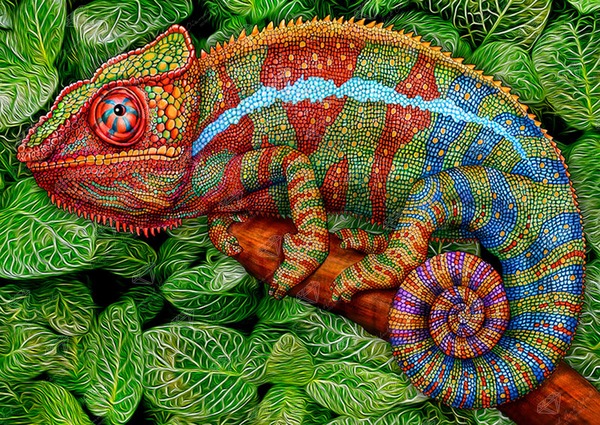
1. Leopard Chameleon (rich colors, varied patterns)
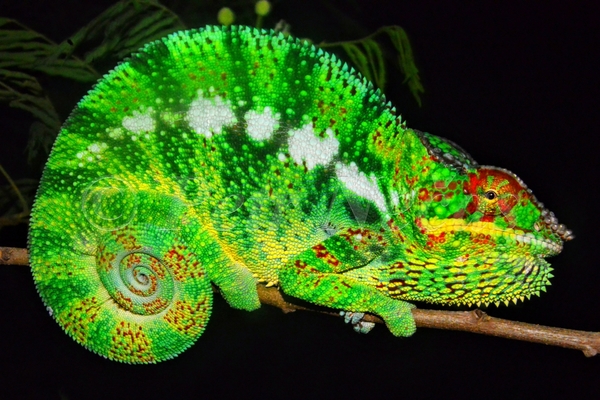
Leopard Chameleon, also known as the seven-color chameleon, is one of the most beautiful chameleons, famous for its rich colors and varied patterns. The viewing effect is very good, and its body color changes are closely related to its mood. For example, it may turn light in hot weather, red when angry, and gray when afraid. Some of the chameleons we are familiar with, such as Ambilubbe, Nosy Be, Nosy Fari, etc., all belong to the category of Leopard Chameleon. The difficulty of keeping Leopard Chameleon is comparable to that of High-crowned Chameleon, and the price is slightly higher than that of High-crowned Chameleon.
2. Rainforest Jewel Chameleon (spherical scales, banded patterns)
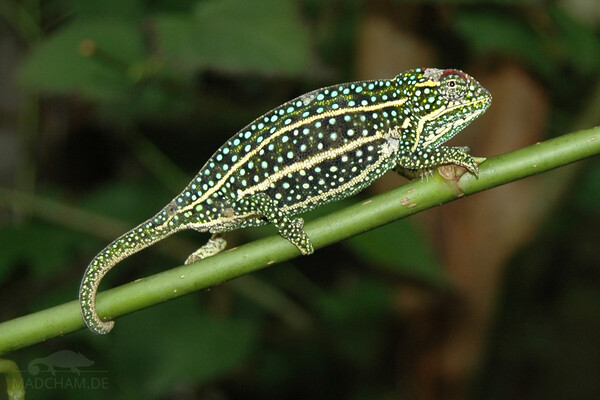
Jewel chameleons are recognized as the most attractive of all chameleons, and the Rainforest Jewel Chameleon is the most famous. Although called "jewels", the word "jewel" does not refer to their dazzling body color like jewelry, but to the delicate beauty of their spherical scales. These chameleons have a color-changing ability that is difficult to describe, and sometimes it is difficult to determine their base color. Although the Rainforest Jewel Chameleon is beautiful, it has not received the attention it deserves from the illegal pet trade because almost all of them cannot be transported smoothly and it is extremely difficult to capture them in the wild, so their number has gradually decreased.
3. King Chameleon (largest chameleon)
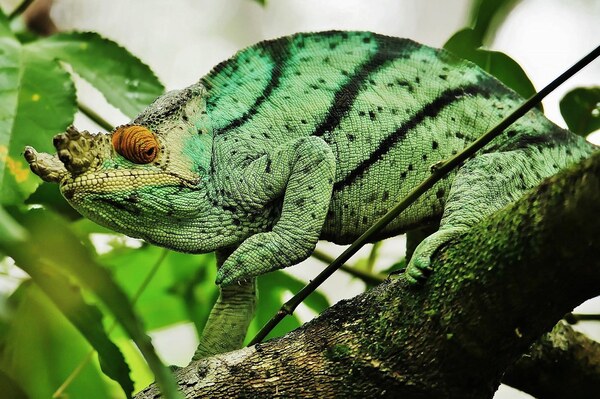
King Chameleon is a large chameleon that lives in remote, humid primeval forests on the island of Madagascar and is a local endemic species. Adult king chameleons can be up to 65 cm long, and a few individuals may even reach 70 cm. They are good at preying on small mammals, birds, and even other reptiles, using their powerful tongues to catch prey at one time, and the length of their tongues can even reach 1.5 times the length of their bodies. This chameleon thrives on the island of Madagascar on the east coast of Africa. King chameleons are not only large in size, but also extremely rare and ferocious. They are considered one of the rarest chameleons.
4. High-crowned Chameleon (the cheapest chameleon with a wide temperature range)
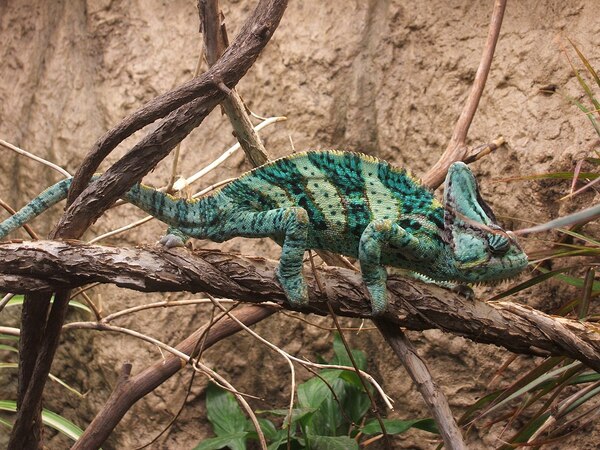
The crown chameleon is famous for its tall fleshy crown on its head. This chameleon is relatively rare, with a few in Asia and most of the rest distributed in Africa, especially Madagascar. High-crowned chameleons have a wide range of temperature adaptability, which makes them one of the easiest chameleons to breed and the most suitable entry-level species for beginners to raise. Therefore, they are one of the most common and affordable chameleons raised by reptile enthusiasts around the world.
However, it should be noted that in China, high-crowned chameleons are listed as national second-level protected animals and are protected by the Convention on International Trade in Endangered Species of Wild Fauna and Flora. Therefore, it is illegal for individuals to buy, sell and raise high-crowned chameleons, and private purchase and maintenance are prohibited.
5. Carpet Chameleon (short life span, beautiful pregnancy)
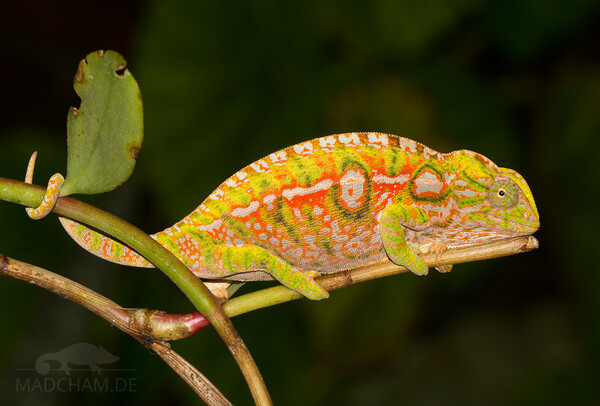
Carpet chameleons are a must-have in the chameleon species overview as common chameleons. They are a smaller type of arboreal chameleons. Despite their small size, they have an amazing fertility and can lay eggs all year round, with 3-6 nests of eggs a year. Wild carpet chameleon eggs usually have a higher hatching success rate than artificially bred eggs. Female carpet chameleons display colorful body colors during pregnancy, and their appearance during this period is more eye-catching and varied than male chameleons. However, carpet chameleons have a relatively short life span, usually only 2-3 years.
6. Jackson's Chameleon (Triangle Chameleon, Gentle Personality)
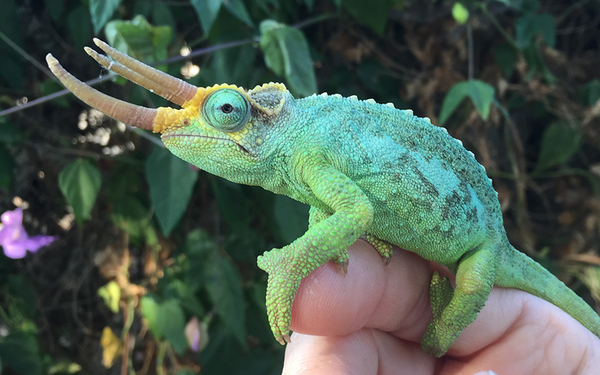
There are three most common types of chameleons as pets, including the rainbow chameleon, the high-crowned chameleon, and the Jackson's chameleon. One of them is the Jackson's Chameleon, which is only found in Kenya and Tanzania. They are known for their striking appearance and unique behavior. Their eye-catching appearance and magical color-changing ability make them a favorite among pet breeders. Although Jackson's Chameleons are not very aggressive, they are often captured and trafficked around the world as pets because of their charming appearance and peculiar color-changing characteristics. Although Jackson's Chameleons are limited in aggressiveness, it is best to keep them alone to maintain their natural state. Compared with the other two chameleons, Jackson's Chameleons are more difficult to keep.
7. Sprayed Chameleon (The most numerous chameleon)
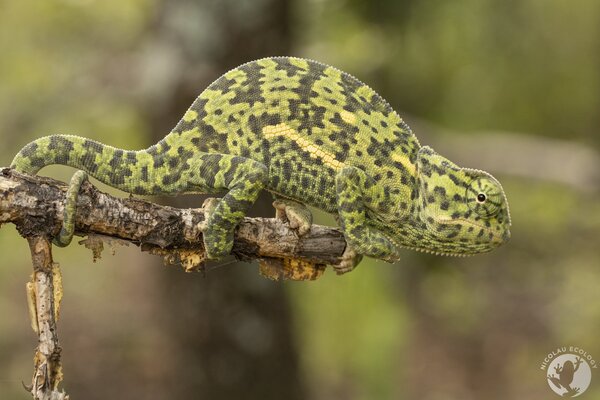
Sprayed Chameleon is one of the most widespread and numerous chameleons in the world. Due to its wide distribution, sprayed chameleons are generally more adaptable to different environments than other chameleon species. This sprayed chameleon includes many subspecies, but they are not distinguished in detail, so they show great variation in body color. The main body color ranges from khaki to green, all have black spots all over the body, and are equipped with ear crowns that can be erected and changed according to different emotions. However, due to different distribution areas, the size of the ear crowns between sprayed chameleons can also vary significantly.
8. Mino Chameleon (bright colors, very short skin change)
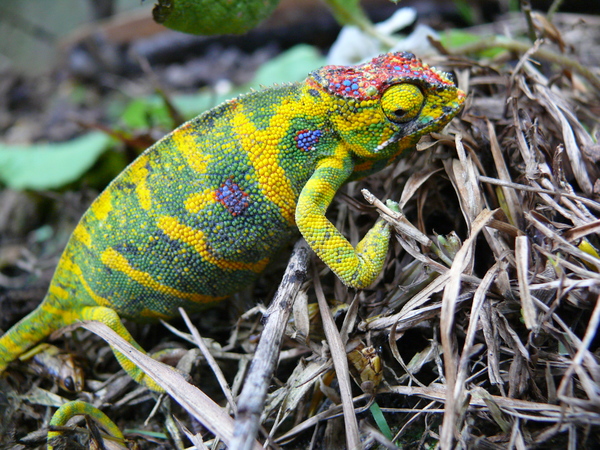
The Mino Chameleon is a fascinating chameleon that is endemic to Madagascar, Africa. They mainly live in humid tropical forests at altitudes of 1,000 to 1,650 meters, and can even be found in coffee and cocoa plantations. Mino Chameleons are usually solitary, active during the day and night, and use their long tongues to show efficient hunting skills when preying on insects. This chameleon can reproduce three times a year. Male Mino Chameleons are about 24 cm long, while females are slightly smaller, about 16 cm long. Mino Chameleons are known for their colorful body colors and can quickly change skin color, showing amazing color changes.
9. Giant warty-crowned chameleon (large spines, crown covered with round scales)
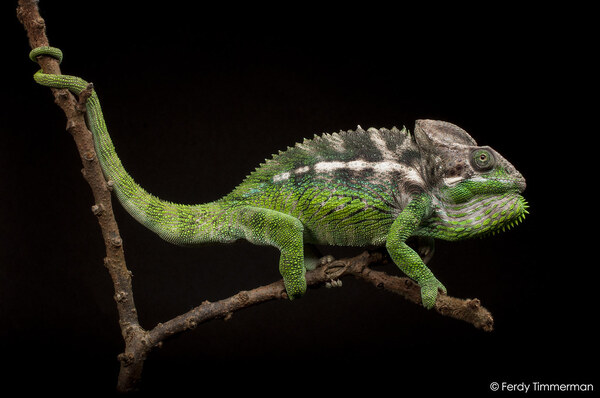
The giant warty-crowned chameleon is another large Madagascar chameleon. It looks similar to the Orix chameleon, but the giant warty-crowned chameleon has larger spines, a more slender body, and different body colors. However, the most striking feature is that they are covered with large round scales from the back of their heads to behind the eyes, which look like flesh warts, so they are often called giant warty-crowned chameleons. As long as you understand their habits and feed them a variety of foods, training them is no more challenging than that of the high-crowned chameleon. For breeders who like large chameleons, this chameleon is a relatively easy choice for successful breeding.
10. Miller's Chameleon (Africa's largest chameleon)
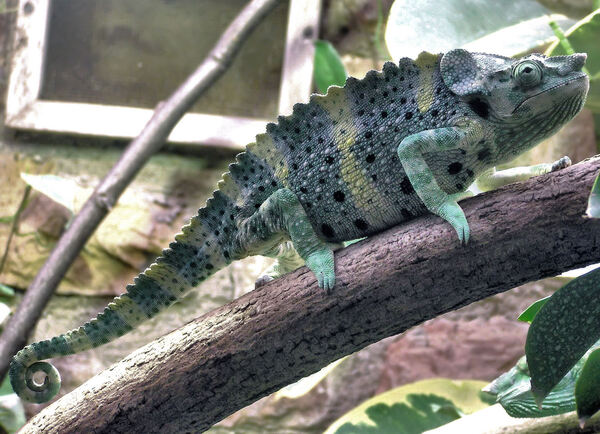
Miller's Chameleon is the largest chameleon on the African continent. Adults can reach 61 cm in length, and a few can even reach 76 cm in length, weighing 600 grams. This chameleon has a tongue up to 51 cm long, two fan-shaped occipital lobes behind the head that look like ears, and a row of semicircular ridges on the back. Usually, their skin patterns are mostly yellow and green, interspersed with spots, or white and green alternately.
Miller's Chameleon is also one of the few chameleons that can move in groups, and is more picky about food than ordinary chameleons. Whether adults or juveniles, they like to prey on flying food.
animal tags: Chameleon
We created this article in conjunction with AI technology, then made sure it was fact-checked and edited by a Animals Top editor.